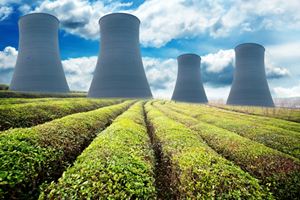A fresh look at what Russia’s invasion means for energy companies
Russia’s invasion of Ukraine has dominated headlines in terms of being a humanitarian crisis in Eastern Europe, which it is, first and foremost. It also continues to have sweeping implications for the global energy industry, the global economy, and everyone on the planet; and it will continue to do so.
Major disruptions in Europe. Players across the globe have already taken decisive action in banning Russian oil and gas imports and are thinking ahead in terms of their energy needs. The EU targets a replacement of 90% of Russian oil by next winter, but some private analysts expect much less.
Where will missing supply come from? As countries ban or actively work toward reducing Russian oil and gas supplies, there is an intense interest in securing other sources. In January 2022, the International Energy Agency (IEA) predicted that oil demand in 2022 might rise as much as 3.3 MMbpd from the year prior and that OPEC might seek to expand oil production to meet global demand and provide some spare capacity. But so far, it seems that OPEC is content with unusually high prices, which naturally fill its coffers.
Some apparent political distancing from the U.S. and the West – which happens to follow criticism of Saudi Arabia’s active role in the conflict in Yemen – together with China’s position as Saudi Arabia’s largest oil customer, may not be coincidental. It is entirely possible that OPEC is shifting, or at least balancing, its relationship with the U.S. and Europe with those with China, Russia and India. Consequently, OPEC may be slow to come to the rescue of economies struggling with high oil prices.
Outside of OPEC, operators are working at close-to-maximum capacity already and are unable to just “open the tap” significantly on short notice. Recently, BlackRock’s management acknowledged that Russia’s invasion had resulted in a temporary hold on carbon emissions goals, and that they are particularly wary of proposals to stop financing to fossil fuel companies, force them to decommission assets, or set absolute targets for companies on reducing emissions in their supply chains and their customers. Even with the softening of language toward the oil and gas industry, many investors in private oil companies lack confidence in long-term markets for oil and gas products and fear the energy transition will dramatically reduce the need and demand for oil and gas within the next decade. So, the supply response in the U.S. is likely to come at a slower pace than in prior periods of high prices.
But at least oil can be delivered by ship almost anywhere in the world, making a switch to new sources much more practical than in the case of natural gas. In contrast, delivering additional natural gas requires all of 1) expanded well production; 2) pipelines; 3) LNG; and 4) large facilities for both export (liquefaction) and for import (gasification) of LNG. Those facilities and ships require major capital investment and years to build, and existing facilities are near full utilization already. So, while the U.S. is politically supporting expanded LNG exports to Europe, it will take an extended period to fully realize this transition.
Looking ahead at prices and the economy. Oil prices are based on global supply and demand, with the largest suppliers being government-controlled entities. Russian export supply had been a substantial part of this picture. Supply imbalances, coupled with a conflict, increase the perception of risk, having a major impact on oil prices. If hostilities do abate, that could remove any risk premium and lead to somewhat moderated prices in the near term. Additionally, there is some, if moderate, interest in expanding capacity. For example, ExxonMobil and Chevron are increasing spending, and some companies are pointing to the Permian basin as a potentially significant medium-term source of production increases after years of constrained capital spending.
In light of the recent strong demand recovery as the pandemic has waned, there is the potential for already high energy prices to stay high or possibly increase in coming months. Unfortunately, in addition to creating inflation, abnormally high oil and gas prices over a sustained period typically lead to a recession – and an accompanying drop in oil and gas demand and lower prices. In March, oil amounted to 4.5% of global GDP, as a result of the high price, and this level has historically been sufficient to curtail demand. All of this is largely a result of under-investment in oil and gas in recent years and the resulting shortage of supplies. Nonetheless, with this price uncertainty in mind, the predominant mindset among oil investors is to be cautious and to invest only on the basis of long-term average prices (if at all), since there is a strong possibility that we will see much lower prices long before any capital that is invested now can be returned to those investors.
The risks of recession are further amplified by serious continuing supply chain problems, which are about to get significantly worse, in part because of logistics issues that arise because Russia has the largest land mass of any nation on earth. Instead of shortages largely in parts and shipping, we’re now looking at shortages in numerous minerals, metals, wheat and other food products, and the list goes on, indicating yet another risk of a global recession to come.
Where energy companies should focus. The cost of both debt and equity capital have already begun to rise, and it is virtually inevitable that those costs will rise over the coming year given the U.S. and other governments’ efforts to curb inflation by hiking interest rates, as well as rising risk factors, and terms will be more difficult, while additional liquidity will likely become more valuable.
Cues to be taken from all these dramatic developments and the best course for an enterprise and any individual will certainly depend on their particular situation and available choices, but here are a few thoughts:
- Countries need to work diligently to broaden their energy supply sources, with particular attention to security of supply. There has already been some shifting, but much of this will take years.
- Think even harder about both supply chain and price pressures and prepare. Prices will substantially change, but unevenly, over many sectors. Some may benefit in the near term from inflation. Others will see costs rise without the ability to immediately pass it through in prices. Every company should consider its margin outlook, as well as that for suppliers and customers. In some cases, companies may want to aggressively build inventory, which requires capital.
- Recapitalize and/or trim assets. The time to strengthen balance sheets is now. The cost of debt and the cost of equity will rise significantly, and terms on financing will likely get tougher. If companies have a lender that is uncomfortable, consider a replacement. If a company can arrange more liquidity, whether through the expansion of a debt facility, a sale of some equity, or a sale of non-core assets, this is the time to do it.
- Prepare for a recession. Take action to trim costs and adjust to be sustainable with a temporary reduction in business.
- We need to broaden the mix of energy sources. We need to aggressively pursue renewable energy and other forms of clean energy, including nuclear power and large-scale energy storage, which is one of the places hydrogen can play a role. The energy mix must also include oil and gas in the foreseeable future and natural gas on a longer-term basis than oil.
In summary, with the U.S. as one of the leading producers of oil and gas, and one not limited by OPEC guidance, American investors and American energy companies will need to step in and assume the role of meeting the world’s energy needs. The right path involves government-led energy-related incentives and perhaps penalties, mostly of an economic nature, and a market-based system otherwise mostly left to do what it does best.
Capital flows into the energy complex – focused on both existing sources and from new sources of energy – must accelerate rapidly, and American producers of natural gas and crude oil should be encouraged to increase their fossil fuel activity, while at the same time, we continue to expand investments aggressively into renewable and clean alternatives.





